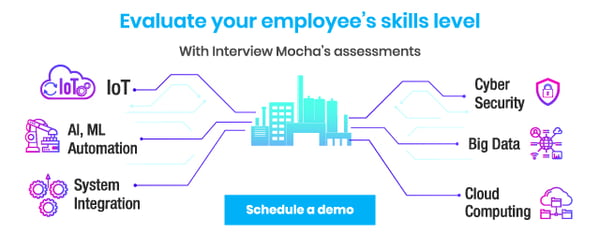The whole world is moving towards digital transformation in this time. It comes with several lucrative benefits but also comes with challenges for an IT leader. And surpassing them will mean the difference between success and failure. Here’s a list of challenges any IT leader should be aware of and few important points you need to follow while handling these challenges.
Lack of digital transformation strategy or leadership
Digital transformation strategy should be aligned with corporate strategy. An IT leader may sometimes fail to define how digital transformation plays an important role in achieving business goals. They might invest a lot of money in initiatives that are not at all effective. The success of digital transformation is greatly dependent on how effectively a leader is able to devise a digital transformation plan that is aligned with business goals & execute the same effectively.
Things you need to keep in mind while creating digital transformation strategy:
- Define the purpose of your digital transformation and align it with business strategy
- Communicate this purpose with your entire team
- Evaluate current situation of each business process, digital infrastructure, employee skills, & find out gaps and opportunities
- Create a team of digital transformation leaders who can execute digital transformation strategies and fill up this gap
Skills gap
As per a Gartner survey 70% of employees haven’t mastered the skills they need for their jobs today. Skills gap is a major problem that you will face in your digital transformation journey. A leader may pump in a large amount of investments in the digital transformation process but those efforts may be wasted if there is a large digital skills gap in the organization.
So, try to find out what technical skills you need for digital workforce transformation and then perform skill-gap analysis for existing employees. Once you identify skills-gap, you can either go for recruiting digital talent or upskilling/reskilling existing employees to fill up this gap.
While recruiting new talent may seem to be an expensive way of filling the skills-gap, you can go for it if you have enough budget. Or else, you can invest in training & development programs for existing employees.
Things you need to keep in mind while bridging digital transformation skills gap
- Plan a roadmap for digital skills based on current needs and future needs
- Develop effective upskilling/reskilling programs
- Build a culture of self learning & incentivise the process of new skill learning
Cultural challenges
“Culture eats strategy for breakfast” – Peter Drucker
According to the McKinsey survey, culture is one of the main hurdles for digital transformation. Employees are so used to the existing culture that they show resistance to adapt to new digital culture. Employees may prefer to use old tools and solutions and may not collaborate or share information with cross-functional teams. And, the leaders may neglect the importance of ‘culture’ in digital transformation planning.
Things you need to keep in mind while creating digital culture:
- Match your digital strategy to culture
- Focus on strengths of existing culture
- Focus on removing departmental silos & improving cross-functional collaboration
- Change their KPI and incentive structure to adjust to digital transformation strategy
Data security
When businesses go digital with technologies like AI/ML, cloud computing, IoT, it comes with a problem of data security. Most of the organizations still suffer from cyber security attacks. These attacks indicate why cyber security plays an important role in any digital business.That’s the reason IT leaders must take data security as a priority in their digital transformation journey.
Things you need to keep in mind while creating data security strategy
- Implement security controls at every level i.e.People, Process & Technology
- Implement security standards in the organization like ISO27001 & IISF
- Use machine learning algorithms to detect and react to possible threats
- You can opt for security solutions like ‘security as a service’ available in the market
Conclusion:
Digital transformation is something every organization has to face in this digital era. Digital transformation requires a strong leader to drive the whole process. It is a huge responsibility but if you are implementing it in the right way, it will produce a sustainable business that is even more aligned with the customer demands.



